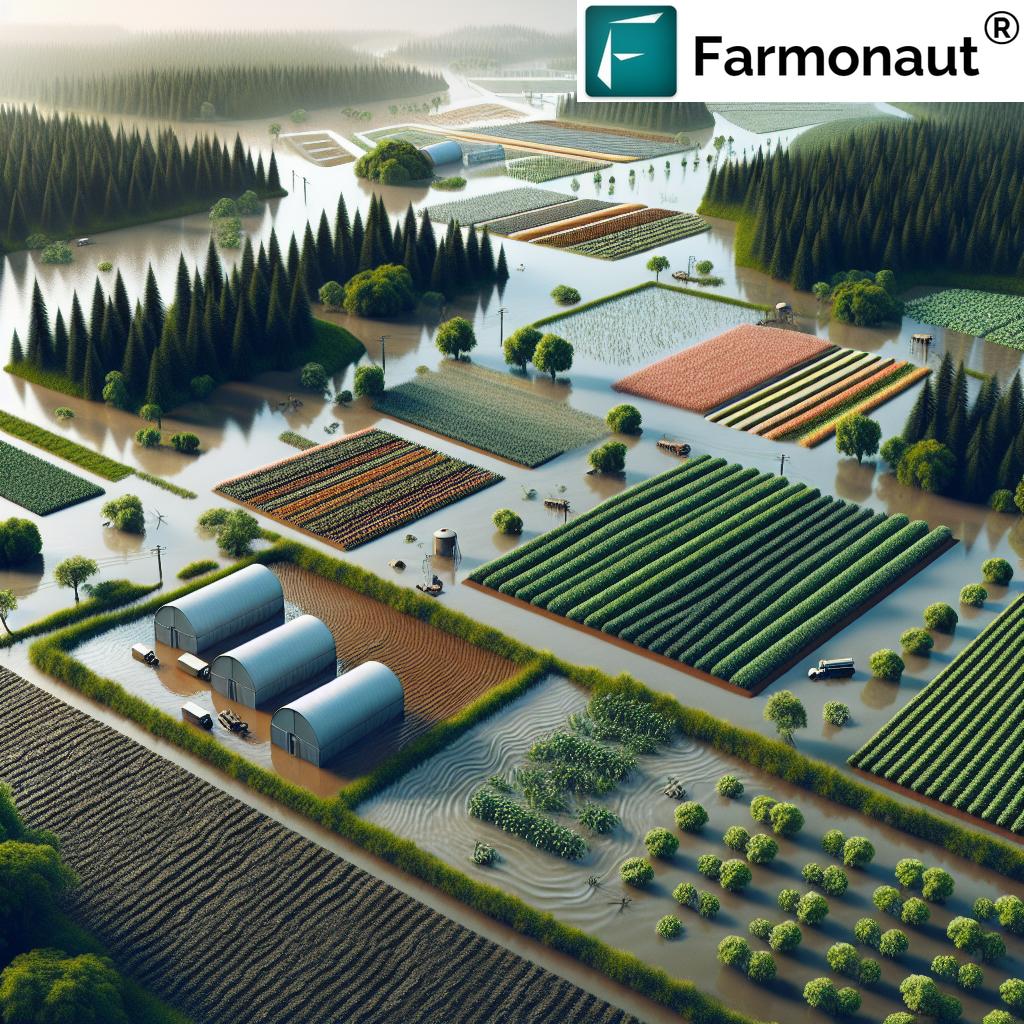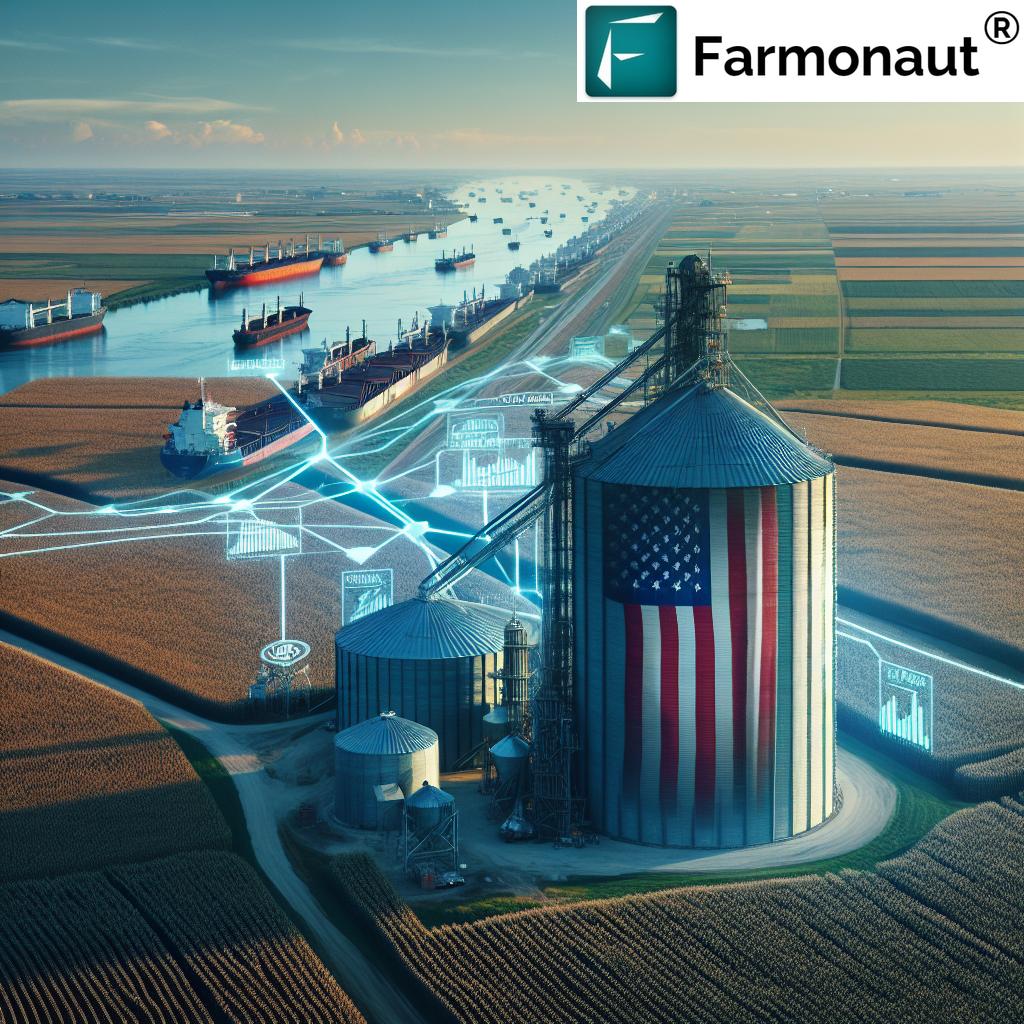Wet Weather Farming Conditions: 7 Ohio Strategies
“Ohio farmers can lose up to 30% of crop yield due to prolonged wet weather and poor soil drainage.”
Introduction: Why Wet Weather Farming Conditions Matter in Ohio
Wet weather is no stranger to Ohio. In recent years, unpredictable weather patterns have brought excessive rainfall and persistent dampness, affecting not only the day-to-day work of farmers in the field, but also broader agriculture and forestry sectors. The challenges created by continuous heavy rains—such as soil erosion, soil health decline, delayed planting and harvesting, increased disease and pest proliferation—are further complicated by the unpredictable impacts of climate change.
As climate patterns evolve, each season brings new obstacles. Understanding wet weather impact on agriculture is crucial for maintaining crop yields, ensuring operational efficiency, and keeping our economic stability intact. In this guide, we’ll explore seven proven strategies developed to bolster the resilience of Ohio farmers against wet weather, protecting both productivity and environmental sustainability.
Focus keywords: wet weather, soil erosion, crop yields, farmers, Ohio, strategies, management, resilience, sustainability.
Understanding the Impacts of Wet Weather on Agriculture and Forestry
The impact of excessive rainfall on crop yields and forest health is multi-faceted. In Ohio and other states dealing with changing weather patterns, persistent moisture creates a range of challenges for farmers and foresters. Let’s break down the reasons why wet weather impact on agriculture is so significant:
1. Soil Erosion and Compaction – The Hidden Cost
- Soil erosion prevention strategies have become crucial as continuous rainfall washes away fertile topsoil – the very bedrock of productive farming and plant growth.
- Compacted soils develop as ground stays saturated. Machinery and continuous water pressure reduce pore space, hindering root development and water infiltration.
- Compaction impedes root respiration, further impacting both crops and forest regeneration.
Example: When heavy rains continue for days or weeks, soil can literally become waterlogged, making it impossible for air to move freely. This stunts plants’ roots, reduces essential oxygen availability, and leads to increased runoff—moving not only topsoil, but also vital nutrients out of the field.
2. Delayed Planting and Harvesting Schedules
- Excess moisture delays field work, so planting and harvesting must be rescheduled, leading to shorter growing seasons and potential yield reductions.
- Ohio’s spring planting season now sees increased anxiety due to climate-driven heavy rains, as farmers face fewer usable field days (AP News).
- Globally, rains have disrupted planting schedules in places like the UK, making it very difficult to access fields and salvage crops.
Shorter growing windows mean lower final harvests and a race against the progress of pests and mildew.
3. Disease and Pest Proliferation in Saturated Conditions
- Wet conditions create favorable environments for fungal diseases and pest proliferation: Wheat, grape vineyards, and apricot orchards often see significant drops in yields after just a few weeks of excess rain (Le Monde).
- The spread of molds, rust, and root pathogens is much faster in continuously moist, poorly ventilated environments.
4. Root Rot and Plant Stress – Silent Yield Killers
- Persistent wetness leads to root rot, depriving roots of oxygen and causing decay.
- Plant stress reduces growth, makes crops vulnerable to new diseases, and lowers their resilience to further shocks.
5. Flooding and Infrastructure Damage
- Severe and continuous rainfall can result in flooding, damaging infrastructure like roads, irrigation systems, and storage facilities.
- The costs of repairs, lost days, and operational downtime all add up, reducing efficiency and profitability.
“Implementing cover crops can improve soil health and reduce erosion by up to 58% in wet farming conditions.”
Economic Consequences of Wet Weather in Farming
Economic effects of extreme weather on farming can be staggering. Across the European Union, farmers lose an average of €28.3 billion a year to extreme weather events—and only a fraction of these losses are covered by insurance (Reuters). In the United States, the story is similar: US farmers regularly battle climate change challenges that push many toward financial instability (Time).
- High operational costs in wet weather are often the result of field delays, damaged crops, equipment repairs, and disrupted schedules.
- For small farms, the potential for total or partial loss due to a single season’s weather can threaten generational operations and rural economies.
- As weather extremes increase, the burden on states to implement support strategies becomes even more urgent.
For this reason, improving soil health management in agriculture and investing in effective wet weather management strategies are more than smart—they’re crucial for ongoing stability.
7 Ohio Strategies to Manage Wet Weather Farming Conditions
To tackle the complex web of challenges created by wet weather, Ohio farmers and foresters have developed a sustainability-focused approach. Here are the 7 proven strategies every farm in Ohio—and similar regions—should consider to maintain resilience and productivity:
- Improving Farm Drainage Systems
- Crop Diversification Benefits
- Utilizing Resilient Crop Varieties
- Soil Management Practices
- Timely Planting and Harvesting Schedules
- Building Infrastructure Resilience
- Engaging in Policy Advocacy and Support
1. Improving Farm Drainage Systems
- Installing underground tile drainage and surface ditches helps direct excess water away from fields.
- Drainage reduces root rot risk and compaction by keeping soils aerated and trafficable.
- Effective drainage prevents flooding and agricultural infrastructure damage by protecting roads, equipment, and storage facilities from waterlogging.
Use Case: Soggy fields in central Ohio can be productive again with well-designed subsurface pipes or strategically placed open ditches. This support is often required following years with unprecedented rainfall and field saturation.
Learn more about fleet management and optimizing resources on the farm with Farmonaut tools.
2. Crop Diversification Benefits
- Growing a wider range of crops spreads the risk associated with changing weather patterns.
- Some crops are more tolerant of wet conditions, while others may handle dry spells better—ensuring not all fields are vulnerable at once.
Use Case: Pairing typical Ohio corn or soybean with small grains or forage varieties can reduce total yield loss in a wet year.
Discover large-scale farm management solutions to aid crop diversification and monitoring.
3. Utilizing Resilient Crop Varieties
- Modern plant breeding provides new seeds bred for tolerance to floods, root rot, and quick maturation in short seasons.
- Choosing varieties that better handle heavy rains decreases losses and improves resilience.
- Remember to consult local extension offices and research updates for the best fit for your soil types and yield goals.
4. Soil Management: Preventing Erosion and Improving Health
- Using cover crops between cash crops feeds beneficial microbes, maintains soil structure, and helps anchor topsoil during rains.
- Compost, manure, and reduced tillage boost organic content, increasing water retention and infiltration rates.
- Soil health management also reduces compaction by encouraging root development and enhancing overall farm resilience.
Use Case: Following a wet corn harvest with a rye grass cover crop can cut spring erosion nearly in half.
Monitor and manage environmental impact through Farmonaut’s carbon footprinting features.
5. Timely Planting and Harvesting Schedules
- Adapting to real-time weather data and shifting planting schedules helps minimize exposure to the worst wet periods.
- Fast action is sometimes the only way: Taking advantage of short dry spells for fieldwork is critical in wet springs.
- Modern technology, such as real-time advisory systems, lets farmers act fast when a window opens.
Get expert, satellite-based field advisories on Farmonaut’s farm management app.
6. Building Infrastructure Resilience
- Floors of storage facilities and critical farm buildings should be above known flood lines; access roads must have improved drainage and higher beds.
- Waterproofing and regular maintenance reduce repair costs from sudden water damage.
- Investing in these improvements pays off many times over by reducing future downtime and losses.
Access advisory resources on sustainable infrastructure and plantation management.
7. Engaging in Policy Advocacy and Support
- Farmers and foresters should actively seek government support and advocate for robust insurance and subsidy schemes tailored to the increasing risks of wet weather.
- Making use of satellite-verified insurance solutions can provide extra stability.
- Staying informed about local and federal programs helps secure funding for proactive improvements rather than post-disaster aid.
Comparison Table of Wet Weather Management Strategies
| Strategy Name | Estimated Effectiveness (% ↑ Yield) | Cost Level | Environmental Impact | Required Resources | Implementation Timeframe |
|---|---|---|---|---|---|
| Improving Drainage Systems | 10-20% | Medium-High | Low | Engineering, pipes, machinery | 1-3 seasons |
| Crop Diversification | 5-12% | Low | Positive | Seed, advisory support | 1 season |
| Resilient Crop Varieties | 3-10% | Low-Medium | Neutral | Seed sourcing, research | 1-2 seasons |
| Soil Management Practices | 5-15% | Low | Positive | Cover crop, compost, labor | 1 season onward |
| Timely Planting & Harvesting | 3-8% | Low | Neutral | Weather data, labor | Seasonal |
| Infrastructure Resilience | 2-7% | Medium | Neutral-Positive | Building materials, planning | 1-2 years |
| Policy Advocacy & Support | 3-12% | Low to None | Positive | Community engagement | Ongoing |
The Role of Farmonaut in Modern Wet Weather Farming
With the rise in climate change challenges for farmers and the increasing frequency of extreme weather in places like Ohio, leveraging technology has never been more important for sustainability and economic stability. At Farmonaut, we provide advanced, satellite-based farm management solutions and tools, empowering farmers to:
- Monitor crop health and soil moisture in real-time using multispectral satellite imagery
- Receive AI-driven advisories for weather forecasts, precision irrigation, pest management, and field-specific actions
- Trace agricultural products with secure, blockchain-based traceability for supply chain transparency (see more: Farmonaut’s Product Traceability)
- Optimize logistics and vehicle use with satellite-aided fleet management
- Track emissions and implement carbon footprinting for more sustainable farming practices
- Enhance access to satellite-verified crop loans and insurance—improving financial resilience
Our platform, accessible from Android, iOS, Browser App, and API, replaces guesswork with science—helping farmers adjust planting and harvesting schedules, allocate resources more efficiently, and make data-backed decisions for yield maximization even in seasons of excessive rain.
- For individual farmers: affordable crop monitoring, disease alerts, and resource allocation support
- For agribusinesses: oversee vast fields, track machinery, and operate sustainably at scale. Learn about Farmonaut’s Large Scale Farm Management suite.
- For governments/NGOs: drive sustainable policy, monitor at regional or national levels
- For financial institutions: satellite-verified farm data supports transparent loan and insurance issuance
Subscriptions, API integration, and more: Whether you grow for a living or manage hundreds of hectares, Farmonaut offers scalable, real-time digital solutions for everyone. See our options below:
FAQ – Wet Weather Farming in Ohio and Beyond
What is the main wet weather impact on agriculture in Ohio?
Excessive rainfall can lead to soil erosion, delayed planting schedules, and increased disease among crops—which collectively cause yield reductions and economic loss for farmers.
How does climate change affect wet weather conditions for farmers?
Climate change increases the frequency and unpredictability of weather extremes, making heavy rains, flooding, and short dry spells more common. This complicates planning, crop selection, and all aspects of farm management.
What are the most effective soil erosion prevention strategies?
Key practices include implementing proper drainage systems, planting cover crops, reducing tillage, and maintaining residue cover on soil surfaces. These steps help keep topsoil in place and improve its health even during intense rains.
How can satellite-based technology benefit Ohio farmers in wet weather conditions?
Satellite technology provides real-time insights into field moisture, crop growth, and pest/disease risks—helping farmers make informed decisions about irrigation, field entry, and harvesting despite unpredictable weather.
Are grants or insurance available for wet weather-related crop loss?
Many federal and state programs, as well as satellite-verified crop insurance solutions, are available. Engaging with these programs can provide financial stability in disaster years.
Conclusion: Wet Weather Farming Conditions – Ohio’s Path Forward
Wet weather farming conditions present a formidable challenge not only for the productivity and efficiency of Ohio’s farms, but also for the region’s overall ecological and economic stability. The negative impacts of continuous rainfall—from soil erosion and disease proliferation to infrastructure damage—are increasingly prevalent under the pressure of climate change and shifting weather patterns.
By implementing effective management strategies—including drainage improvements, diversification, better scheduling, soil management, and strong advocacy—we can sustain yields, minimize economic losses, and bolster the resilience of both farming and forestry sectors. The adoption of advanced digital solutions and real-time monitoring, like those provided by Farmonaut, ensures that every decision made is informed and evidence-based.
Commitment to these sustainable practices and embracing technology paves a secure path for Ohio farmers and other regions facing similar environmental challenges. As the weather grows more unpredictable, resilience—rooted in knowledge and innovation—remains our most important crop.




















